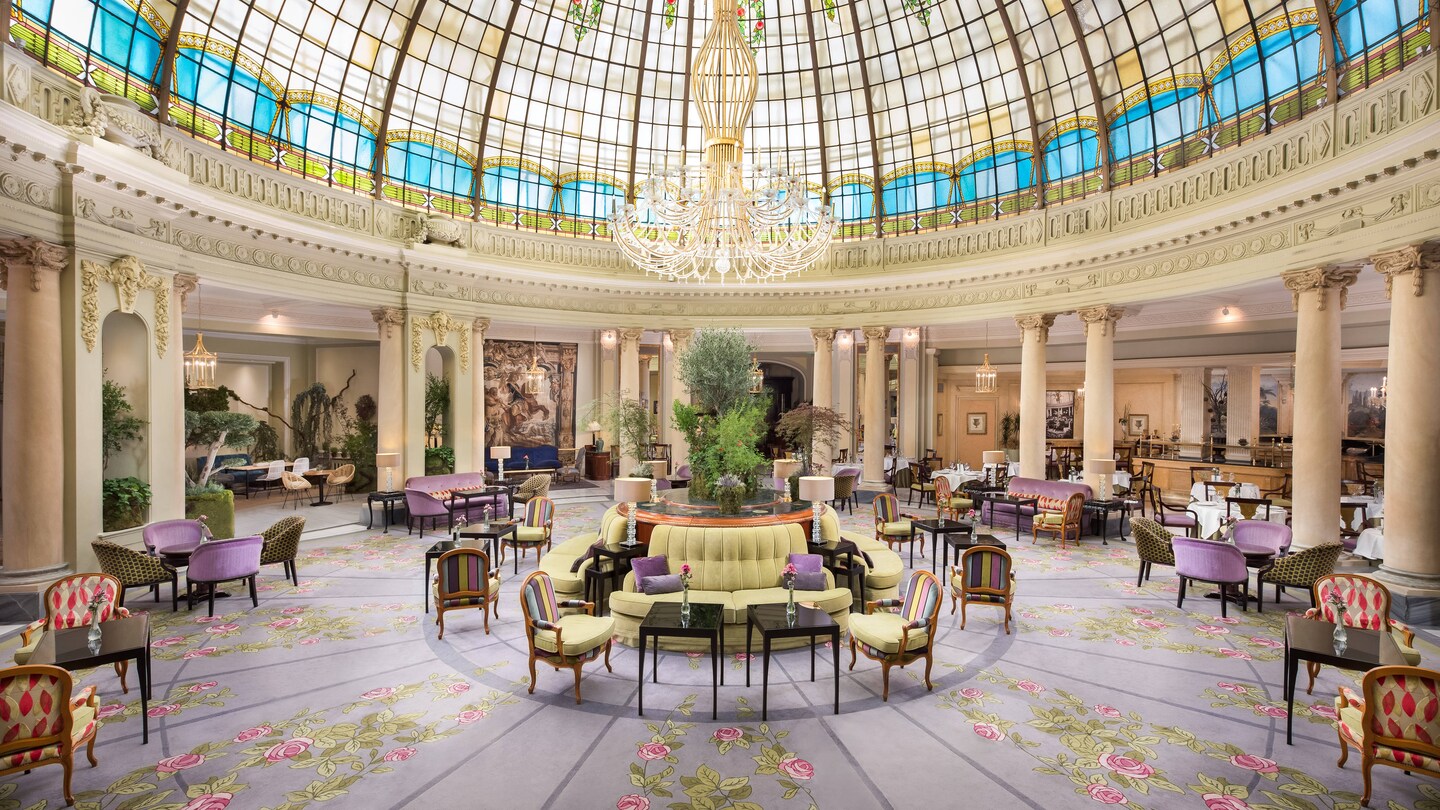Cadaques. The village at the front of the Cap de Crues peninsula. The hillsides and valley were covered in ancient terraces, none appear used.
Cap de Creus Natural Park. Eroded rock and windswept low trees characterize the park that occupies the entire peninsula past Cadaques. The road ends at the lighthouse.
Far de Cao de Creus. This lighthouse sits 87m above sea level on the tip of the peninsula. Parking was impossible – I counted 89 cars and 15 motorcycles – and I parked in the “crippled” parking for the night (there were two more also unused). By midnight, I was the only one in the lot. I can’t remember a more windy night. The van rock and rolled throughout. Now I understood why no plant was taller than four feet.
Most everyone was at the Bar Restaurant that sits near the lighthouse overlooking two small rocky inlets and the coast south. It was packed mostly with 20 somethings drinking and listening to live music. Only the over 40s were eating.
Rocky trails lead to great views of the two small islands just off the coast.
Empuries was an ancient city on the Mediterranean coast of Catalonia (“trading place”), it was founded in 575 BC by Greek colonists from Phocaea. After the invasion of Gaul from Iberia by Hannibal the Carthaginian general in 218 BC, the city was occupied by the Romans (Latin: Emporiae). In the Early Middle Ages, the city’s exposed coastal position left it open to marauders and it was abandoned.
On Costa Brava, the ruins are midway between the town of L’Escala and the tiny village of Sant Martí d’Empúries. Empúries was founded on a small island at the mouth of the river Fluvià, in a region inhabited by the Indigetes (at the present time, the mouth of the Fluvià is about 6 km to the north). This city came to be known as the Palaiapolis, the “old city” and in 550 BC, the inhabitants moved to the mainland, creating the Neapolis, the “new city”.
After the conquest of Phocaea by the Persian king Cyrus II in 530 BC, the new city’s population increased considerably through the influx of refugees. In the face of strong pressure from Carthage, the city managed to retain its independent Hellenic character. Political and commercial agreements were concluded with the indigenous population long settled in the nearby city of Indika. Situated as it was on the coastal commercial route between Massalia (Marseille) and Tartessos in the far south of Hispania, the city developed into a large economic and commercial centre as well as being the largest Greek colony in the Iberian Peninsula.
During the Punic Wars, Empúries allied itself with Rome, and Publius Cornelius Scipio initiated the conquest of Hispania from this city in 218 BC. After the conquest of Hispania by the Romans, Empúries remained an independent city-state. However, in the civil war between Pompey and Julius Caesar, it opted for Pompey, and after his defeat it was stripped of its autonomy. A colonia of Roman veterans, named Emporiae, was established near Indika to control the region.
From that time onwards, Empúries began to decline, obscured by the power of Tarraco (Tarragona) and Barcino (Barcelona). At the end of the 3rd century it became one of the first cities in Spain to admit Christian evangelists. In that century, too, the Greek town was abandoned while the Roman town survived as a mint and the largely ceremonial seat of a coastal county, Castelló d’Empúries, until the Viking raids of the mid-9th century. Coinage began again under count Hugh II of Empúries (1078–1117). Although the precise location of the town was known since the 15th century, it was only in the 20th century that systematic excavations were carried out. The first official excavations started in 1908.
Palaiapolis. The island on which the Palaiopolis was situated is now part of the mainland and is the site of the mediaeval village of Sant Martí d’Empúries. The former harbour has silted up as well. Hardly any excavation has been done here.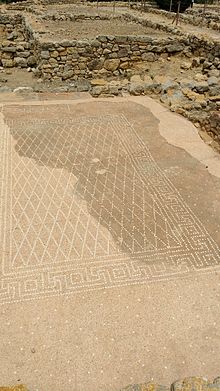
A mosaic in the Neapolis. “Ηδύκοιτος”, “the pleasure of lying down” can be seen at the top.
The Roman archaeological site is not worth visiting. The ruins are basic low rock walls with vivid descriptions. The small museum has some worthwhile objects. 4E reduced, 2E to park.
Gala Dali Castle House Museum. The Castle of Púbol located in Púbol is a medieval building where the surrealist painter Salvador Dalí’s enormous creative efforts were focused on a single person, his wife Gala, with the aim of providing her with a unique sanctuary and resting place. In this sense, Gala is buried at the castle. Together with the Salvador Dalí House Museum in Portlligat and the Dalí Theater-Museum in Figueres, they form the Empordà Dalinian triangle.
Púbol Castle is the nucleus of La Pera, along with the church. It has three floors. The Church of Sant Pere de Púbol was built between 1327 and 1341 in Gothic style. The current castle and church were built around 1420.
Dalí bought the castle for Gala in 1969 and restored it. Gala spent every summer here from 1971 to 1980. He agreed not to visit there without getting advance permission from her in writing. After Gala’s death in 1982, she was buried in the crypt that Dalí had prepared for her. Dalí moved into the Castle for the first time the same year. He lived and worked there, finishing his last painting in 1983, until 1984, when a fire broke out in his bedroom under unclear circumstances. He returned to Figueres, where he lived comfortably in the Galatea Tower of his Theater-Museum for his final years. Dalí planned to be buried at the crypt of the Castle of Púbol, near Gala, but he instead would be entombed at his final home.
The Gala Dalí Castle House-Museum opened in 1996 and houses the paintings and drawings that Dalí gave to Gala to exhibit, a collection of haute couture dresses, the furniture and numerous objects that decorated the castle, as well as the mausoleum of Gala. The garden is decorated with sculptures of elephants with long legs and the pool with busts of German composer Richard Wagner. 8E
BARCELONA (pop 1.6 million, 5.6 million metropolitan) is on the coast of northeastern Spain, the capital and largest city of the autonomous community of Catalonia, as well as the second most populous municipality of Spain and fifth most populous urban area in the European Union after Paris, the Ruhr area, Madrid, and Milan.
Founded as a Roman city, in the Middle Ages, it became the most important city in the Crown of Aragon. Barcelona has a rich cultural heritage and is today an important cultural centre and a major tourist destination. Particularly renowned are the architectural works of Antoni Gaudí and Lluís Domènech i Montaner, which have been designated UNESCO World Heritage Sites.
I’m not sure why I came here again (for the 4th time) as it is a congested, thief ridden place. If it were not for Gaudi, it may not be worth the time.
Maquanista Shopping Mall. Opened in 2000, La Maquinista: “The Machinist” is an open-air mall, the only one in Barcelona and one of the biggest in Catalonia. Made of metal structure, there are 230 stores within this large, spread-out complex. Find apparel, specialty stores, and restaurants. It’s quite far from the city center!
El Palace Hotel. Formerly known as Hotel Ritz, the old Ritz hotel was founded in 1919, at the initiative of César Ritz . During the civil war it was occupied by leftist forces. 3 2 After the end of the war, in 1940, stayed within its walls the Nazi leader Heinrich Himmler on his visit to Spain and would be in this same decade when it was acquired by Julio Muñoz Ramonet , later, in 1975, it would pass into the hands of Joan Gaspart , being integrated into the Husa Hoteles chain . In 2005, as a result of a series of legal disputes, it was forced to permanently lose the name “Ritz”, and was renamed “Palace”. In 2011, Husa sold the hotel for 80 million euros to the Algerian businessman Ali Haddad , although he maintained his management through a lease, through the company Inmobiliaria Sarasate. In 2014, this management company filed for bankruptcy , at which point Haddad assumed direct management of the hotel.
Woman and Bird. (Dona i Ocell) is a 22-metre high sculpture by Joan Miró located in the Parc Joan Miró in Barcelona, Catalonia, Spain. The sculpture was covered in tiles by the artist’s collaborator Joan Gardy Artigas. The sculpture is part of an artwork trilogy commissioned from Miró to welcome visitors to Barcelona. The concrete structure was formally opened in 1982 and it was one of Joan Miró’s last large sculptures.
Car passengers that arrive in Barcelona can see the strong colours of the tiles which are indicative of Miró’s style.
The work uses some of Miró’s recurring themes of women and birds. In Catalan the word for a “bird” (ocell) can be used as slang for penis. This might be reflected in the phallic shape of the main form[5] which has a hole through the glans. The sculpture is decorated in primary colours and it has a vulva shaped split down the side of the shaft which is lined with blackish tiles. The idea for the sculpture is not new and examples of placing vulva on a model penis and a hole in the glans have been found on Roman sculpture from the second or third century.
The park where the sculpture is installed covers four blocks of the Barcelona road grid near the Plaça d’Espanya. The park is a popular area to relax.
 |
Barcelona Pavilion. Designed by Ludwig Mies van der Rohe and Lilly Reich, was the German Pavilion for the 1929 International Exposition in Barcelona, Spain. It is an important building in the history of modern architecture, known for its simple form and its spectacular use of extravagant materials, such as veneers of Tinos verde antico marble and golden onyx, tinted glass of grey, green, white that form the spatial dividers. The same features of minimalism and spectacular can be applied to the furniture specifically designed for the building, including the Barcelona chair. It has inspired many important modernist buildings.
It was supposed to represent the new Weimar Germany: democratic, culturally progressive, prospering, and thoroughly pacifist; a self-portrait through architecture.

Plan of the Barcelona Pavilion
The pavilion was to be bare, with no exhibits, leaving only the structure, a single sculpture and specially-designed furniture (the Barcelona Chair). The roof plates are supported by chrome-clad, cruciform columns giving the impression of a hovering roof. Because this was planned as an exhibition pavilion, it was intended to exist only temporarily. The building was torn down in early 1930, not even a year after it was completed.
Between 1983 and 1986, a group of Catalan architects reconstructed the pavilion permanently.
Georg Kolbe’s Alba (“Dawn”)[7] sits in the small water basin with multiple views of Alba, leaving the larger one all the more empty.
Since reconstruction, leading artists and architects have added installations and alterations: spiral acrylic interior walls, artist Ai Weiwei refilled two pools with coffee and milk,
Punta del Diable (Ferres Aquaduct), “Devil’s Bridge”), is an ancient bridge, part of the Roman aqueduct built to supply water to the ancient city of Tarraco, today Tarragona in Catalonia, Spain. The bridge is located 4 kilometers north of the city and it is part of the Archaeological Ensemble of Tarraco (listed as a UNESCO’s World Heritage Site since 2000).The Tarraco aqueduct took water from the Francolí river, 15 kilometers north of Tarragona. It probably dates from the time of the emperor Augustus.
Les Ferreres Aqueduct is composed of two levels of arches: the upper section has 25 arches, and the lower one has 11. All arches have the same diameter of 20 Roman feet (5.9m) with a variation of 15 cm. The distance between centres of the pillars is 26 Roman feet (7.95m). It has a maximum height of 27 metres (89 ft) and a length of 249 metres (817 ft), including the ends where the specus (water channel) runs atop a wall.
I slept here overnight and walked around in the morning.
VALENCIA (pop 800,000, 1.7 to 2.5 million metropolitan) is the third-largest city inept Spain after Madrid and Barcelona. The Port of Valencia is the 5th-busiest container port in Europe and the busiest container port on the Mediterranean.
Valencia was founded as a Roman colony in 138 BC and called Valentia Edetanorum. In 714, Moroccan and Arab Moors occupied the city, introducing their language, religion and customs; they implemented improved irrigation systems and the cultivation of new crops as well.
In 1238 the Christian king James I of Aragon conquered the city and divided the land among the nobles who helped him conquer it, In the 18th century Philip V of Spain abolished the privileges as punishment to the kingdom of Valencia for aligning with the Habsburg side in the War of the Spanish Succession.
The city is situated on the banks of the Turia. Its historic centre is one of the largest in Spain, with approximately 169 ha (420 acres). Due to its long history, Valencia has numerous celebrations and traditions, such as the Fallas.
Pont des Serrans. With the gateway, Las Torres de Serranos, it provided access for people arriving La Serranía, who were known as serranos. It was built in 1518 using nine segmental arches with a breakwater, cutwaters and parapets after its predecessor was swept away in the previous year’s flood.
The Serranos Towers testify to the walled nature of the city during the Middle Ages, a symbol of Valencia’s power. The Turia River is now converted into gardens, park and playing field.

Parroquia Sant Nicolau de Bari i Sant Pere Martiria. Recently restored, it has been called the Valencian “Sistine Chapel”. One of twelve Christian parish churches constructed after the reconquest of Jaume I in 1238, it was built as a parish church in 1242, remodeled in the Gothic style between 1419 and 1455, with the Gothic rib vault contracting in the central nave. Between 1690 and 1693, the interior was recoated with Baroque decoration and fresco paintings of scenes of the life of San Nicolás de Bari (Saint Nicholas) and San Pedro Mártir (Saint Peter Martyr).
Every Monday the Church receives hundreds of visitors who make the “Walks of Saint Nicholas” or Devotion to San Judas Tadeo, patron of impossible causes. Its restoration has been classified as “the most important architectural and pictorial-ornamental work ever carried out anywhere in the world due to the scale of the work and the techniques used”. 7E, 6 reduced![]()
![]()
La Lonja de la Seda WHS. Thisis a late Valencian Gothic-style civil building and a principal tourist attraction in the city. Built between 1482 and 1533, la Lonja is composed of three parts (plus the Orange Garden – a walled court-yard). The main hall, Sala de Contratacion (The Contract Hall), is a large lavishly decorated space supported by gorgeous twisted columns. This was the financial centre of La Lonja, where the merchants work out contracts. The side-wing is the Pavilion of the Consulate, the seat of the Tribunal del Mar – the first marine merchant tribunal to be formed in Spain. The first two floors were the main function rooms, with the upper one hosting a richly decorated ceiling. These rooms are still maintained original furnishings. On occasion, the Tribunal would imprison merchants for debts in the central tower of La Lonja – the third part of the structure.
The inscription in the Trading Hall that it was not a necessary to be a Protestant or a foreigner to establish the basis of a good trade; it also showed the union of ethics and economy. During subsequent centuries, La Lonja functioned as a silk exchange. The honesty of its traders is honored by the inscription that runs around the main contract hall.
Inscribed as a World Heritage Site in 1996 as an example of a secular building in late Gothic style that illustrates the power and wealth of one of the great Mediterranean mercantile cities.


Mercat Central (The Central Market of Valencia) is a public market located across from the Llotja de la Seda and the church of the Juanes in central Valencia. It is one of the main works of the Valencian Art Nouveau.
In 1839, the spot had been used to inaugurate an open-air marketplace called Mercat Nou. Construction or this market was from 1914- 1928. The Central Market of Valencia is one of the largest in Europe, covers more than 8,000 square metres. Its unusual roof comprises original domes and sloping sections at different heights, while the interior seems to be lined in a range of materials such as iron, wood, ceramics and polychromed tiles. The beauty of the building stands out especially on account of the light that enters through the roof at various points, and through coloured window panels. Most vendors sell food items, although souvenir shops and restaurants are located inside the market as well. It is a popular location for tourists and locals alike.

Mercat Municipal Placa Redonda. Today it is a popular tourist attractions rather than as a traditional market as it used to be in the past. Almost perfect circular wall of four-floors houses with identical facades isolates Plaça Redona (“Round Square”) from the surrounding historical center of Valencia. Four entrance passageways provide the only
access.
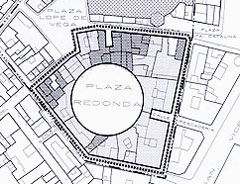
Romans used it as a fish and meat market. In 1806, the market slaughterhouse was moved outside of the old town. Construction lasted from 1837 to 1846 as a perfectly round (37 meters in diameter) and functioned as a fish and meat market. Its interior’s round shape was hidden from the outside view as the whole block housing the new plaza had the shape of the larger polygon determined by the layout of surrounding streets and buildings.
In 2012, the old wooden cover was replaced by a modern stainless-steel/glass one. 
Shops sell local ceramics, clothing, souvenirs and all sorts of embroidery and haberdashery and less meat and fish. Many old shops were converted into tapas bars and cafeterias. On Sundays, local craftsmen, painters and all sorts of artists present their own selection of “art”, souvenirs, antiques, coins, stamps, books…. etc.
Valencia Cathedral (Metropolitan Cathedral–Basilica of the Assumption of Our Lady of Valencia or Saint Mary’s Cathedral) is a Roman Catholic parish church in Valencia, Spain. The cathedral was consecrated in 1238 after the Reconquista, It was built over the site of the former Visigothic cathedral, which under the Moors had been turned into a mosque. Valencian Gothic is the predominant architectural style of the cathedral, although it also contains Romanesque, French Gothic, Renaissance, Baroque and Neoclassical elements.
The cathedral contains numerous 15th-century paintings, some by local artists (such as Jacomart), others by artists from Rome. A purported Holy Chalice, believed by many to be the true Holy Grail, is revered in one of the cathedral’s chapels. It has been the official chalice for many popes, and has been used by many others, most recently by Pope Benedict XVI, on July 9, 2006. This chalice with Arabic inscriptions dates from the 1st century, and was given to the cathedral by king Alfonso V of Aragon in 1436.
Climb the historic tower for great city views. 8E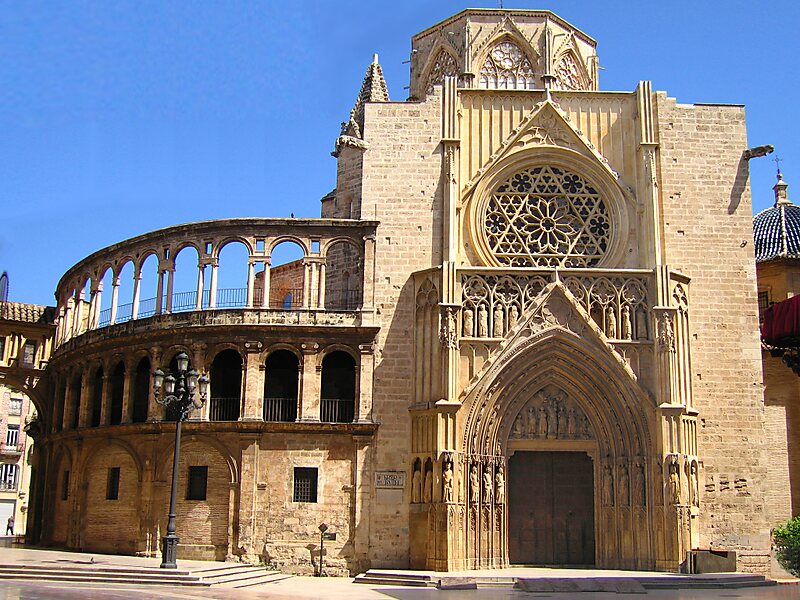
In 1926, the Puente del Mar was free of traffic. The images were destroyed in 1936. They were replaced in the 1940s, with José Ortells López taking charge of carving the new image of San Pascual Bailón, and Vicente Navarro Romero of the Virgen de los Desamparados, and it was paved with rodeno tiles.
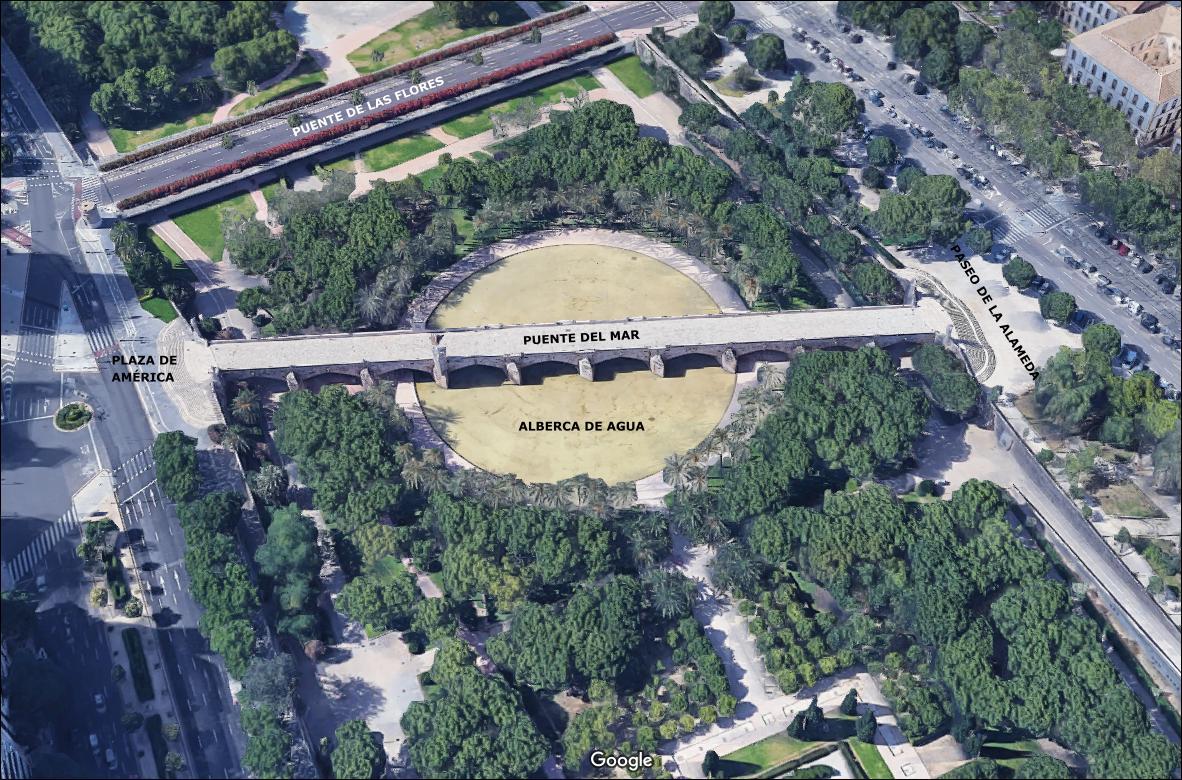
Mercat de Colon is a public market located in the city center, one of the main works of the Valencian Art Nouveau. It impresses with its extraordinary facade and lavish decor. The market was replaced by several restaurants and bars.
These four fantastic modern buildings are together with surrounding reflecting pools. I saw them first when here in 2011.
City of Arts & Sciences complex is a cultural and architectural complex, the most important modern tourist destination in the city of Valencia and one of the 12 Treasures of Spain. It is situated at the southeast end of the former riverbed of the river Turia, which was drained and rerouted after a catastrophic flood in 1957. The old riverbed was turned into a picturesque sunken park. Inaugurated in 1998 with the opening of L’Hemisfèric. The last major component of the City of Arts and Sciences, Palau de les Arts Reina Sofia, was inaugurated on 9 October 2005, Valencian Community Day. The most recent building in the complex, L’Àgora, was opened in 2009.
Originally budgeted at €300 million in 1991 for three structures, it has expanded about three times the initial expected cost.

Palau de les Arts Reina Sofia (“Queen Sofía Palace of the Arts”) is an opera house, performing arts centre, and urban landmark designed by Santiago Calatrava to anchor the northwest end of the City of Arts and Sciences in Valencia, It opened on 8 October 2005; Queen Sofía Palace of the Arts is the last major structure built of a grand City of Arts and Sciences concept designed by the Valencia-born and internationally known architect Santiago Calatrava, which began in 1995. The building rises 14 stories above ground and includes three stories below ground. Its height is 75 metres (246 ft), being the tallest opera house in the world.[5] Under the metallic, expansive curved-roof structure, 230 m (755 ft) in length, the 40,000 m2 (431,000 sq ft) building contains four auditoriums:
The Sala Principal (Main Hall) seats 1,470 people and functions primarily for opera, with four tiers of seating, one of the largest stages in the world equipped with all major facilities, and the third largest orchestra pit in the world, being capable of housing 120 musicians. The entire cultural complex suffered a series of floods.
The Auditorium is located above the Main Hall. It seats 1,420 people and its facilities include sound and video systems capable of projecting displays of events taking place in venues below it. Officially given to the managing trust during the 2007–2008 season, it is a spectacular venue with multiple uses, from multi-genre concerts to political rallies.
Aula Magistral is capable of seating 400 people and is used for chamber music performances and conferences.
Martí i Soler Theatre was constructed below the base of the Palau’s plume and seats 400 people. It is used for theatre productions and as a training centre for the main auditoriums. This hall suffered vast damage during the 2007 flooding. 
Hemisferic. IMAX Theatre.

L’Agora. Massive modern building for sports, concerts and other events at the
Veles E Vents Urban Beach. Ultramodern structure know as America’s Cup Building offering leisure facilities and harbor views stands above the beach.

L’Umbracle

I woke up at 3am because of the oppressive heat and drove 120kms to Calp.
Platja de la Fossa (Levante beach) is a sandy, bowling and rock beach in the municipality of Calpe. This beach borders the Calalga beach to the north and the Peñón de Ifach to the south and has a length of 950 m, with a width of 40 m.
It is located in an urban environment, with street access. It has a promenade and delimited parking.
The resort town of Calp in Alicante has so many high-rise hotels I lost track. Arriving at 4, I actually drove down to the wonderful curved promenade.
Intempo Building, Benidorm. Is a 47-floor, 202-metre-high skyscraper building in Benidorm, built from 2007-2014, but the sponsoring undertaking went into bankruptcy. In 2018, the building was acquired by SVP Global, and was fully finished by mid-2021. The building is the tallest in Benidorm and the fifth tallest in Spain and one of the tallest in the world in a city of less than 100,000 inhabitants, the tallest residential structure in Spain, and the tallest residential building in the European Union.
The building consists of two parallel towers separated by a gap of 20 metres (66 ft) and connected by a cone-shaped structure between floors 38 and 44. It is one of the few skyscrapers in the world which has the shape of an arch (another in Europe being the Grande Arche in Paris). The façade of the building is of glass, a first for a residential building in Benidorm.
Poor planning led to unsafe working conditions for the builders, construction outpacing design, and a construction elevator collapse which injured several of the thirteen workers aboard. Efforts to assist these people were hampered by design flaws which did not permit emergency vehicles onto the building site.
ALICANT (POP 331,000) is a historic Mediterranean port. Located in an arid territory, Alicante lacks any meaningful permanent water stream.[7] There are however several stream beds correspondent to intermittent ramblas.
Playa del Postiguet. A golden sand beach with surf. Crowded at 10am.
Mercat Central d’Alicant. Sells produce, meat, seafood, cheese and bread.
EICHE (pop 228,647). Part of the municipality is coastal yet the city proper is roughly 11 km (6.8 mi) away from the Mediterranean Sea. A small creek called Vinalopó flows through the city. Elche is the centre of the footwear industry in Spain. The city is noted by its urban Palm Grove, designated as World Heritage Site.
Palmeral of Elche (Palm Grove of Elche). WHS. Thesse date palm orchards were planted in Roman times using water management techniques. Modifications in the medieval period under Islamic and Christian rulers included palm groves and garden-estates in huertos (rectangular base agricultural units). Islamic rulers constructed the largest canal system sections. In the 13th century, Christian rulers conquered Elche and expanded the canal system. Industrialization and urban sprawl contracted the Palmeral in the late 19th and 20th centuries.
The Palmeral is the only palm grove in Europe with North African origins, the northernmost and one of the largest palm groves in the world. Today, the city of Elche contains 97 orchards composed of 70,000 date palms, concentrated in the east bank of the Vinalopó. Outside the city, other large plantations contain approximately 130,000 date palms. The Palm Grove covers 3.5 km2.
By the second half of the 20th century, date harvesting (which still occurs between November and December) and “white palm” weaving for decorative and processional use on Palm Sunday. Under UNESCO, the Palmeral transitioned from a local site to a tourist destination.
National Artistic Garden. Includes the palm groves, the Ornamental Collections, (palm trees from 70 different species, chiefly date palm trees as well as olive trees and citrus trees), ponds, sculptures, and the garden house. Some palm trees grow to a height of more than 30 metres and live up to 300 years. The famous “Imperial Palm” is a 176-year-old, male date palm tree with 7 stems in the shape of a candelabra.
Palm Grove Museum
Route of El Palmeral starts and finishes at the Palm Grove Museum demonstrating the irrigation systems.
Municipal Park in the center of Elche has a garden, Molí del Real water mill, and Hort de Baix outdoor amphitheater.
Basílica de Santa Maria.
El Valle Trenzado. In the city of Elche is the ravine, a geographical accident of more than 40 meters deep that until now has not been able to be enjoyed by the citizens  The
The 
The braiding system does not have to do with the orthogonal framework of the city but rather aims to give voice to the Vinalopó river. The sinuous lines of the slopes evoke the natural and meandering path of the river, creating routes that are accessible, comfortable, and pleasant, and that turn the fact of crossing the river into a walk through highly plastic floating walkways that are not only aesthetic, but that fulfill the functionality of being able to cross the river and in turn create relationships between places.
Orihuela (pop 92,000). In the NM small town series, is a city at the feet of the Sierra de Orihuela mountains in the province of Alicante that stretches all the way down to the Mediterranean coast, west of Torrevieja. The river Segura flows through Orihuela. The city was settled by Romans who called it Orcelis and subsequently Aurariola.
,
